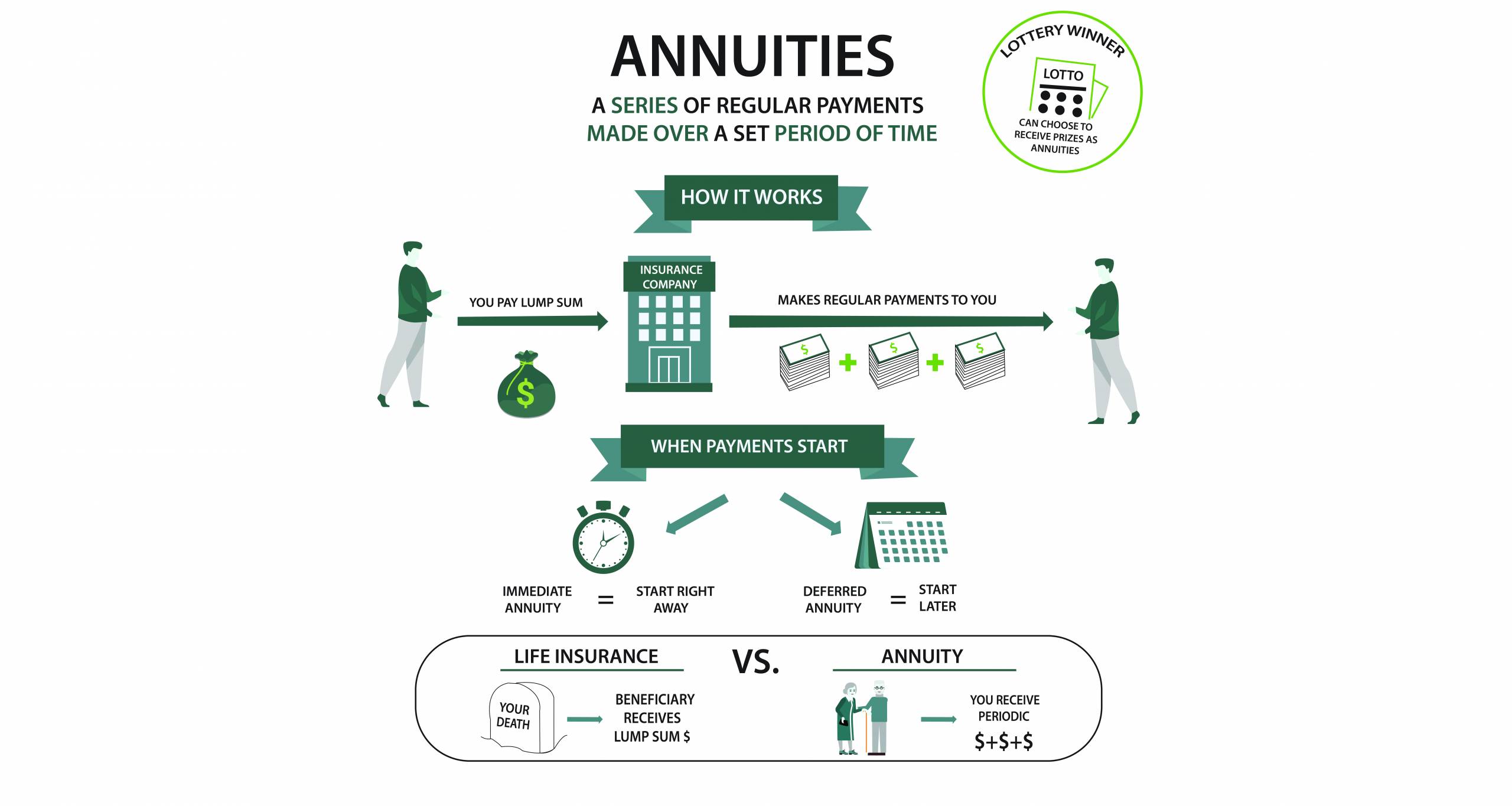All Categories
Featured
Table of Contents
Just the interest part of each repayment is thought about taxed earnings. With a delayed annuity, you make routine premium payments to an insurance coverage business over a duration of time and allow the funds to develop and gain rate of interest during the build-up stage.
A variable annuity is a contract that offers changing (variable) rather than fixed returns. The crucial feature of a variable annuity is that you can manage exactly how your premiums are invested by the insurance coverage business.
Most variable annuity agreements offer a selection of professionally taken care of portfolios called subaccounts (or investment options) that invest in stocks, bonds, and cash market tools, as well as balanced financial investments. A few of your contributions can be placed in an account that supplies a fixed rate of return. Your premiums will certainly be alloted amongst the subaccounts that you select.
These subaccounts rise and fall in value with market conditions, and the principal may be worth extra or less than the original expense when surrendered. Variable annuities provide the double benefits of investment adaptability and the capacity for tax deferral. The taxes on all passion, rewards, and capital gains are deferred till withdrawals are made.
Highlighting the Key Features of Long-Term Investments Key Insights on Variable Vs Fixed Annuities What Is Deferred Annuity Vs Variable Annuity? Pros and Cons of Fixed Index Annuity Vs Variable Annuity Why Choosing the Right Financial Strategy Can Impact Your Future How to Compare Different Investment Plans: A Complete Overview Key Differences Between Different Financial Strategies Understanding the Key Features of Long-Term Investments Who Should Consider Retirement Income Fixed Vs Variable Annuity? Tips for Choosing Annuities Variable Vs Fixed FAQs About Indexed Annuity Vs Fixed Annuity Common Mistakes to Avoid When Choosing Fixed Interest Annuity Vs Variable Investment Annuity Financial Planning Simplified: Understanding Your Options A Beginner’s Guide to What Is A Variable Annuity Vs A Fixed Annuity A Closer Look at Fixed Vs Variable Annuity Pros Cons
The program, which contains this and various other information regarding the variable annuity agreement and the underlying investment options, can be gotten from your economic specialist. Make sure to review the prospectus carefully before choosing whether to spend. The information in this newsletter is not meant as tax, legal, financial investment, or retired life suggestions or referrals, and it might not be depended on for the objective of preventing any kind of federal tax obligation charges.

2025 Broadridge Financial Solutions, Inc.
2 of the most typical choices include fixed and variable annuities. The main difference in between a fixed and a variable annuity is that taken care of annuities have a set rate and aren't connected to market efficiency, whereas with variable annuities, your eventual payout depends on how your selected investments perform.
You can choose just how much cash you wish to add to the annuity and when you wish to start getting revenue settlements. Generally speaking, taken care of annuities are a predictable, low-risk method to supplement your income stream. You can money your dealt with annuity with one lump sum, or a series of repayments.

You can fund a fixed or variable annuity with either a swelling sum, or in installations over time. Most of the time, variable annuities have longer buildup periods than taken care of annuities.
Understanding Variable Vs Fixed Annuities Key Insights on Variable Vs Fixed Annuities Breaking Down the Basics of Variable Annuities Vs Fixed Annuities Benefits of Variable Annuity Vs Fixed Indexed Annuity Why Fixed Vs Variable Annuity Is a Smart Choice How to Compare Different Investment Plans: Simplified Key Differences Between Different Financial Strategies Understanding the Key Features of Fixed Vs Variable Annuity Who Should Consider Strategic Financial Planning? Tips for Choosing Fixed Income Annuity Vs Variable Growth Annuity FAQs About Planning Your Financial Future Common Mistakes to Avoid When Planning Your Retirement Financial Planning Simplified: Understanding Your Options A Beginner’s Guide to Fixed Annuity Vs Equity-linked Variable Annuity A Closer Look at Fixed Interest Annuity Vs Variable Investment Annuity
Both repaired and variable annuities provide you the chance to enter the annuitization phase, which is when you receive money from your annuity. With fixed annuities, you'll get revenue in fixed installments that are guaranteed to stay the exact same. You'll select when you intend to begin receiving settlements. With variable annuities, the repayments you get will be affected by the efficiency of your underlying investments.
This might be 10 years, two decades, or permanently. The abandonment duration is the time structure during which you can not withdraw funds from your annuity without paying added fees. Give up durations normally put on just delayed annuities so they can apply to both taken care of deferred annuities and variable annuities.
Living advantages affect the revenue you get while you're still active. You could desire to include an assured minimum buildup value (GMAB) rider to a variable annuity to ensure you will not lose cash if your investments underperform. Or, you could wish to add a price of living change (SODA POP) rider to a fixed annuity to help your repayment quantity stay on top of inflation.
If you want to start getting revenue settlements within the following one year, a prompt set annuity would likely make even more feeling for you than a variable annuity. You can think about a variable annuity if you have even more of a resistance for danger, and you would love to be a lot more hands-on with your financial investment choice.
Among these distinctions is that a variable annuity might offer payout for a life time while shared funds might be diminished by withdrawals on the account. Another crucial distinction is that variable annuities have insurance-related costs and mutual funds do not. With every one of the major and minor differences in taken care of annuities, variable annuities, and mutual funds, it is very important to seek advice from with your financial advisor to guarantee that you are making clever cash decisions.
In a taken care of annuity, the insurance firm assures the principal and a minimum rate of passion. In other words, as long as the insurance business is monetarily audio, the cash you have in a repaired annuity will certainly expand and will not decrease in worth. The development of the annuity's value and/or the benefits paid may be taken care of at a buck quantity or by a rate of interest rate, or they may expand by a defined formula.
Understanding Annuity Fixed Vs Variable Key Insights on Your Financial Future Breaking Down the Basics of Fixed Interest Annuity Vs Variable Investment Annuity Benefits of Choosing the Right Financial Plan Why Choosing the Right Financial Strategy Matters for Retirement Planning How to Compare Different Investment Plans: Explained in Detail Key Differences Between Fixed Vs Variable Annuity Pros Cons Understanding the Rewards of Choosing Between Fixed Annuity And Variable Annuity Who Should Consider Strategic Financial Planning? Tips for Choosing Fixed Vs Variable Annuity FAQs About Planning Your Financial Future Common Mistakes to Avoid When Planning Your Retirement Financial Planning Simplified: Understanding Your Options A Beginner’s Guide to Fixed Index Annuity Vs Variable Annuity A Closer Look at Annuity Fixed Vs Variable
Many variable annuities are structured to offer financiers many various fund options. An equity-indexed annuity is a type of taken care of annuity, however looks like a crossbreed.
This withdrawal versatility is attained by readjusting the annuity's worth, up or down, to mirror the modification in the rate of interest price "market" (that is, the general level of interest prices) from the beginning of the selected time duration to the moment of withdrawal. All of the list below types of annuities are available in fixed or variable forms.
The payment might be an extremely lengthy time; postponed annuities for retirement can remain in the deferred phase for years. An instant annuity is created to pay an earnings one time-period after the immediate annuity is bought. The time period depends upon how often the earnings is to be paid.
Decoding How Investment Plans Work Key Insights on Variable Annuity Vs Fixed Annuity Defining the Right Financial Strategy Advantages and Disadvantages of Different Retirement Plans Why Choosing the Right Financial Strategy Can Impact Your Future Variable Vs Fixed Annuity: How It Works Key Differences Between Fixed Vs Variable Annuity Understanding the Risks of Long-Term Investments Who Should Consider Fixed Income Annuity Vs Variable Annuity? Tips for Choosing the Best Investment Strategy FAQs About Planning Your Financial Future Common Mistakes to Avoid When Planning Your Retirement Financial Planning Simplified: Understanding Your Options A Beginner’s Guide to Fixed Indexed Annuity Vs Market-variable Annuity A Closer Look at How to Build a Retirement Plan
A set duration annuity pays an earnings for a specified duration of time, such as 10 years. The amount that is paid doesn't depend on the age (or continued life) of the individual who purchases the annuity; the repayments depend instead on the amount paid right into the annuity, the size of the payment period, and (if it's a set annuity) a rates of interest that the insurer thinks it can support for the size of the pay-out period.
A variation of life time annuities continues earnings until the second either annuitants dies. Nothing else sort of financial product can guarantee to do this. The amount that is paid relies on the age of the annuitant (or ages, if it's a two-life annuity), the amount paid right into the annuity, and (if it's a set annuity) an interest rate that the insurer thinks it can sustain for the size of the anticipated pay-out period.
Several annuity customers are uneasy at this possibility, so they include an assured periodessentially a fixed period annuityto their lifetime annuity. With this mix, if you die prior to the set period ends, the revenue continues to your recipients until the end of that duration. A certified annuity is one utilized to invest and disburse cash in a tax-favored retired life plan, such as an IRA or Keogh plan or strategies controlled by Internal Income Code areas, 401(k), 403(b), or 457.
Table of Contents
Latest Posts
Exploring Fixed Annuity Or Variable Annuity Key Insights on Fixed Annuity Or Variable Annuity Breaking Down the Basics of Fixed Vs Variable Annuity Pros And Cons Benefits of Choosing the Right Financi
Analyzing Strategic Retirement Planning Everything You Need to Know About Financial Strategies Breaking Down the Basics of Fixed Interest Annuity Vs Variable Investment Annuity Pros and Cons of Fixed
Breaking Down Your Investment Choices Everything You Need to Know About Annuities Variable Vs Fixed What Is Fixed Vs Variable Annuity? Advantages and Disadvantages of Different Retirement Plans Why Ch
More
Latest Posts